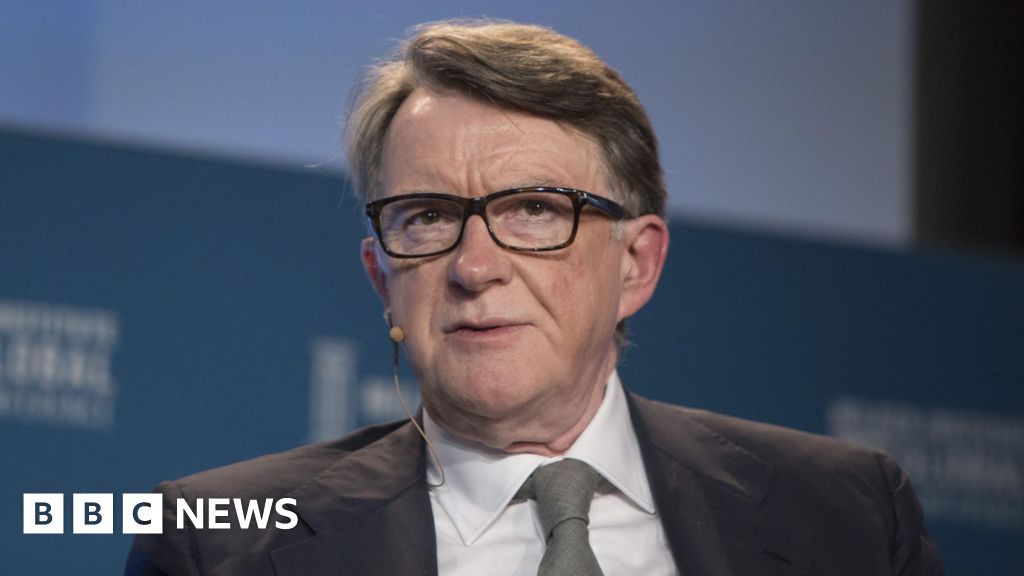ARTICLE AD BOX
By Nicholas Barrett and Daniele Palumbo
BBC Reality Check
Image source, Getty Images
The Labour leader Sir Keir Starmer has clashed with Prime Minister Boris Johnson over a key election pledge on new hospitals across England.
The 2019 Conservative manifesto said: "We will build and fund 40 new hospitals over the next 10 years." Since then, Mr Johnson has repeated this promise and even spoken of "40 more hospitals". But are all of them genuinely new?
What is a new hospital?
When, the pledge was first made - many would have assumed that it referred to brand new hospitals, adding to overall hospital capacity.
But in August 2021, the Department of Health and Social Care (DHSC) sent out guidance to NHS trusts on "key media lines" to use when responding to questions about the pledge.
It defined a "new" hospital in three ways:
- A whole new hospital on a new site or current NHS land
- A major new clinical building on an existing site or a new wing of an existing hospital
- A major refurbishment and alteration of all but building frame or main structure
It said there was a variety of schemes but they "must always be referred to as a new hospital".
How many new hospitals are being built?
The BBC emailed every NHS Trust involved, asking which of the three categories their project fits into.
Some didn't reply. But of the 34 trusts who responded:
- five said they were building a whole new hospital
- 12 said they were building new wings
- nine said they were rebuilding existing hospital buildings
Others were unable to tell us into which category their development fitted.
For instance, Lance McCarthy, chief executive at The Princess Alexandra Hospital NHS Trust, said: "Our current plans are for a new hospital on a new site. However, our business case has not yet been approved.
"We are unable to confirm which category we fall into until we have received final approval."
Image source, Getty Images
The BBC examined the details of the 40 hospital projects, as listed on a government website, and also looked at literature provided by the trusts.
The Nuffield Trust, a health think tank, did the same research. It defines a "new" hospital as "a new building on an entirely new site".
If you use this definition, you find that:
- 22 are rebuilding projects
- 12 are new wings within existing hospitals
- three involve rebuilding non-urgent care hospitals
- three are new hospitals (two general hospitals and one non-urgent care hospital)
We asked the DHSC to confirm this breakdown, but it did not do this.
The government website also includes "competition for eight further hospitals including new mental health hospitals". Details of these projects are yet to be announced.
Nigel Edwards, from the Nuffield Trust, said: "The definitions here are confusing but there is a substantial amount of new hospital building, but only two are new [general] hospitals on new sites.
"The rest are a combination of substantial rebuilds, new wings and a range of substantial new developments. People might equate a new hospital with a completely new building on a new site but the programme is quite reasonably focusing on rebuilding and extending the existing stock of hospitals."
Laurie Rachet-Jacquet, an economic analyst at the Health Foundation, told the BBC: "They are not all 'hospitals' as most people would recognise them." She argues that if the government was building 40 new hospitals, the cost would be much higher.
"Around £3.7bn has been committed to the Hospital Building Programme. But according to NHS Providers, a mid-sized hospital costs around £500m. Forty completely new mid-sized hospitals would therefore require in the region of £20bn - not £3.7bn."
London and South West will benefit
The BBC asked the DHSC to clarify how many entirely new hospitals were being built. In response, a spokesperson said "we have committed to build 48 hospitals by 2030, backed by an initial £3.7bn".
Mr Johnson was asked the same thing at Prime Minister's Questions and replied: "You obviously don't go around building on greenfield sites... you rebuild hospitals and that is what we have said for the last two-and-a-half years."
There won't be "40 more hospitals" - by 2030. The projects that do involve building entirely new general hospitals are designed to coincide with the closure of old hospitals.
And they were both due to open before the government made its hospitals pledge.
Midland Metropolitan University Hospital
The Midland Metropolitan University Hospital in Smethwick is an entirely new hospital which will have 670 beds and 15 operating theatres.
The hospital had been due to open in 2018 at a cost of £350m, but construction was delayed by the collapse of the building firm Carillion. A report by the National Audit Office said the total costs associated with the project are likely to reach £988m. It's not due to open now until 2023.
Royal Liverpool University Hospital
Image source, Getty Images
The redevelopment of the Royal Liverpool Hospital was due to begin in 2013 and to be completed in March 2017 at a cost of £335m.
But because of delays in construction and the collapse of Carillion, the 646-bed facility is now set to be completed in 2022, and may eventually cost more than £1bn.
How are the 40 projects progressing overall?
In its annual report, the Infrastructure and Projects Authority (IPA) gave the overall project an "amber/red" ranking, meaning delivery of the project " is in doubt with major risks or issues apparent in a number of key areas".
On 19 November, the Health Service Journal reported that the IPA's rating for the project has since been downgraded to "red". This means it "appears to be unachievable and there are major issues with project definition, schedule, budget, quality and/or delivery of benefits, which at this stage do not appear to be manageable or resolvable". The new report has not been published but has not been denied by the government.
The DHSC told the BBC that a "red" rating was not unusual for a programme at this early stage of its development and that it does not reflect any delays to individual schemes in the programme.
Additional reporting by Eleanor Frost

 3 years ago
105
3 years ago
105








 English (US) ·
English (US) ·